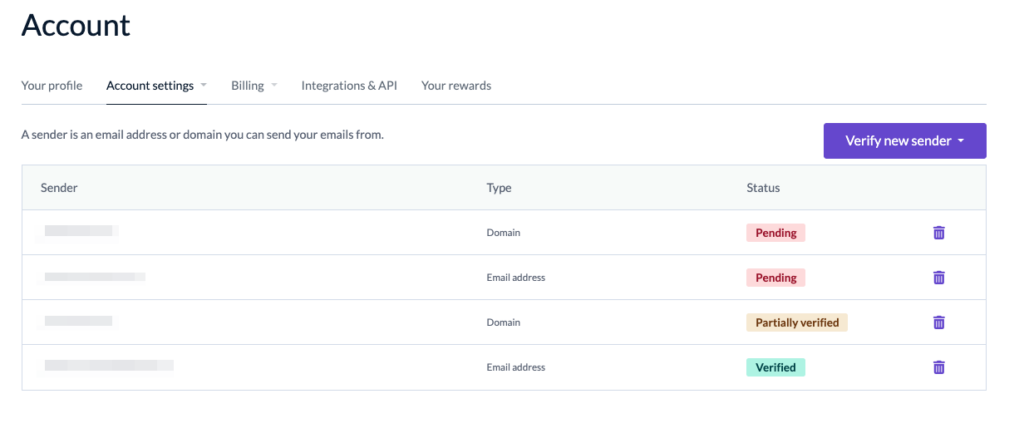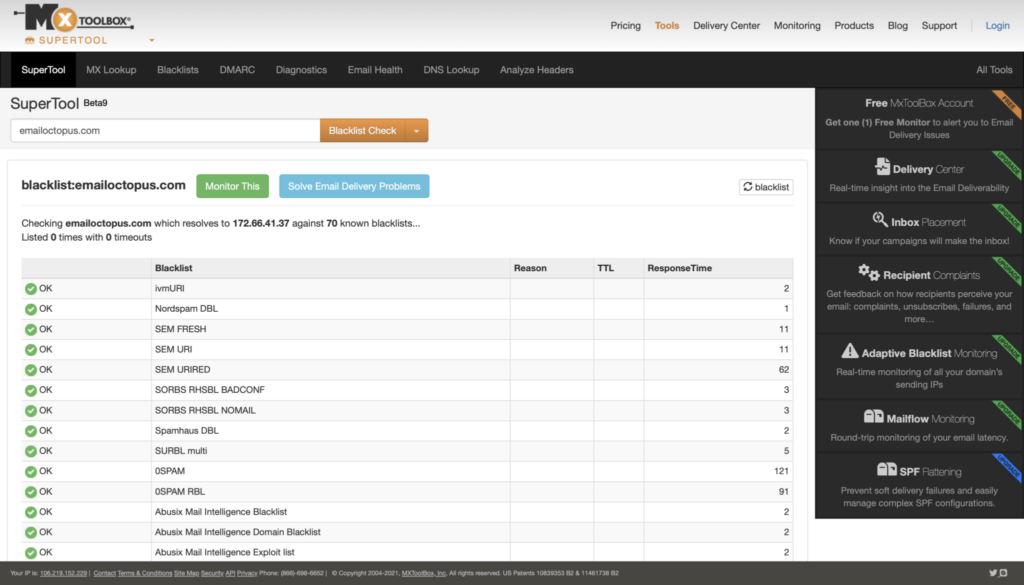A test by EmailToolTester found that one in six emails never made it to users’ inboxes. This means that around ~16% of emails go to waste due to various deliverability issues.
Even though this number might look small to some, it can have a significant effect on your ROI. This why doing an email deliverability audit at regular intervals is so important.
What is an email deliverability audit
Email deliverability audit is a series of checks to see whether your emails are being delivered to users’ inboxes or not.
These tests include looking at things like sender reputation, domain health, email quality, and how you manage your email list. The aim is to find and fix any problems that might stop your emails from being delivered successfully, helping make your email campaigns more effective. An audit suggests best practices, like how to gradually start sending from a new IP address, improve email content, and keep your contact list up-to-date.
Importance of email deliverability audit
An email deliverability audit is crucial for ensuring that your emails reach your recipients’ inboxes effectively. Here are the key reasons for its importance:
- Improved inbox placement: An audit helps identify issues that might be causing your emails to land in spam folders. By addressing these issues, you can increase the likelihood of your emails reaching the inbox.
- Better engagement rates: When your emails are delivered to the intended inbox, there’s a higher chance that recipients will open, read, and engage with your content, leading to improved click-through and conversion rates.
- Reputation management: Regular audits help maintain a positive sender reputation by identifying bad sending practices that could harm your standing with email service providers.
- Compliance with regulations: An audit ensures your email practices comply with laws like CAN-SPAM and GDPR, avoiding legal issues and potential fines.
- Data-driven strategy: By analysing delivery rates and other metrics, you can make informed decisions to improve future campaigns and tailor them for better performance.
- Cost efficiency: Ensuring that your emails are delivered effectively means you’re maximising your marketing budget by reducing wasted resources on undelivered or unengaged emails.
Conducting regular email deliverability audits is an essential part of a successful email marketing strategy.
Email deliverability audit steps
An email deliverability audit is a multiple-step process that you should follow to ensure that all parts of your email sending infrastructure are working properly.
Let’s go through them one by one to understand how to test each of them.
Review email authentication
The first thing you should check while performing an email deliverability audit is your domain authentication. You should start by checking your domain DNS records like SPF, DKIM and DMARC to see if they are properly aligned.
You’ll be able to see these records in your email marketing tool dashboard.

Tools like MailTester and MxToolbox can also help you test your domain authentication by sending an email to the given email address.
Blocklist check
Next, check your domain against all major blocklists since being listed on one can affect your deliverability. It’s worth doing even if you haven’t noticed any issues, as a past mistake could have landed your domain there without you realising.

Here’s a detailed guide to blocklist check and removal.
Check your contact list’s health
The health of your contact list plays a big role in your deliverability.
Start by removing email addresses that no longer exist – custom addresses like name@company.com are often deleted over time. Then, take a look at who’s not opening or engaging with your emails. A re-engagement campaign can help win them back, but if there’s still no response, it’s best to remove them.
Not only will this improve your deliverability, but it can also save you money, as most email platforms charge based on your contact count.
Verify sender reputation
Sender reputation or sender score is just like a credit score, but for your email.
This score affects how likely it is that the sender’s emails will end up in users’ inboxes instead of being marked as spam. Factors that influence sender reputation include email bounce rates, spam complaints, engagement metrics (like open and click rates), and whether the sender’s emails follow authentication protocols like SPF, DKIM, and DMARC.
Keeping a good sender reputation is essential for successful email marketing and communication.
Review engagement metrics
Engagement metrics help you see how well your email campaigns are doing. These metrics include open rates, click-through rates (CTR), bounce rates, and unsubscribe rates. Checking these numbers can help you spot trends and problems in your emails.
- Open rates: This shows how many people opened your email. Low open rates might mean your subject lines aren’t interesting, or your emails are going to spam.
- Click-through rates (CTR): This tells you how many people clicked on links in your email. Low CTRs might mean your email content isn’t engaging or relevant.
- Bounce rates: This is the percentage of emails that couldn’t be delivered. High bounce rates can damage your sender reputation.
- Unsubscribe rates: This is the percentage of people who chose to stop receiving your emails. High unsubscribe rates may mean your content isn’t what your audience wants.
Regularly checking these metrics helps you adjust your strategies to boost engagement and make sure your email campaigns meet your business goals.
Conclusion
An email deliverability audit is a must when you are doing email marketing at scale. Regular audits help ensure your emails land in inboxes, improving your email marketing ROI.
Additionally, audits help improve campaign performance by focusing on data. Keeping a healthy contact list and watching engagement metrics are also key to getting the most from your marketing budget and meeting business goals.


No Comments
Leave a comment Cancel